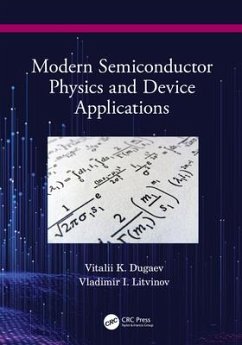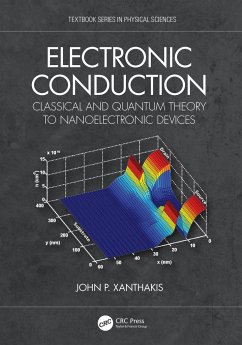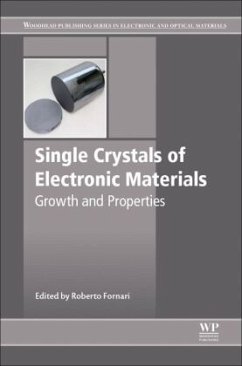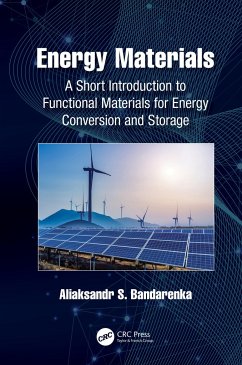
Dopants and Defects in Semiconductors
Versandkostenfrei!
Versandfertig in 6-10 Tagen
51,99 €
inkl. MwSt.
Weitere Ausgaben:

PAYBACK Punkte
26 °P sammeln!
Praise for the First Edition"The book goes beyond the usual textbook in that it provides more specific examples of real-world defect physics ... an easy reading, broad introductory overview of the field" Materials Today"... well written, with clear, lucid explanations ..." Chemistry WorldThis revised edition provides the most complete, up-to-date coverage of the fundamental knowledge of semiconductors, including a new chapter that expands on the latest technology and applications of semiconductors. In addition to inclusion of additional chapter problems and worked examples, it provides more d...
Praise for the First Edition
"The book goes beyond the usual textbook in that it provides more specific examples of real-world defect physics ... an easy reading, broad introductory overview of the field"
Materials Today
"... well written, with clear, lucid explanations ..."
Chemistry World
This revised edition provides the most complete, up-to-date coverage of the fundamental knowledge of semiconductors, including a new chapter that expands on the latest technology and applications of semiconductors. In addition to inclusion of additional chapter problems and worked examples, it provides more detail on solid-state lighting (LEDs and laser diodes). The authors have achieved a unified overview of dopants and defects, offering a solid foundation for experimental methods and the theory of defects in semiconductors.
Matthew D. McCluskey is a professor in the Department of Physics and Astronomy and Materials Science Program at Washington State University (WSU), Pullman, Washington. He received a Physics Ph.D. from the University of California (UC), Berkeley.
Eugene E. Haller is a professor emeritus at the University of California, Berkeley, and a member of the National Academy of Engineering. He received a Ph.D. in Solid State and Applied Physics from the University of Basel, Switzerland.
"The book goes beyond the usual textbook in that it provides more specific examples of real-world defect physics ... an easy reading, broad introductory overview of the field"
Materials Today
"... well written, with clear, lucid explanations ..."
Chemistry World
This revised edition provides the most complete, up-to-date coverage of the fundamental knowledge of semiconductors, including a new chapter that expands on the latest technology and applications of semiconductors. In addition to inclusion of additional chapter problems and worked examples, it provides more detail on solid-state lighting (LEDs and laser diodes). The authors have achieved a unified overview of dopants and defects, offering a solid foundation for experimental methods and the theory of defects in semiconductors.
Matthew D. McCluskey is a professor in the Department of Physics and Astronomy and Materials Science Program at Washington State University (WSU), Pullman, Washington. He received a Physics Ph.D. from the University of California (UC), Berkeley.
Eugene E. Haller is a professor emeritus at the University of California, Berkeley, and a member of the National Academy of Engineering. He received a Ph.D. in Solid State and Applied Physics from the University of Basel, Switzerland.














